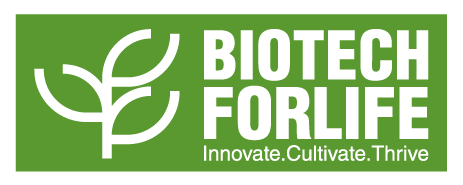Former aggie chief vows to advocate for education, capacity building on biotechnology in new role
Margust Dela Cerna | August 19, 2024
With the recent appointment of former Department of Agriculture Secretary William Dar as chairman of the International Service for the Acquisition of Agri-biotech Applications (ISAAA), a nonprofit organization that spreads bioscience technologies to key stakeholders, especially resource-poor farmers in developing countries, he shared his vision for the organization in empowering the Philippine agriculture sector.
“I envision ISAAA Inc. as: The premier knowledge center of agricultural biotechnology in Asia and Oceania. Information sharing, capacity building support and building partnerships are key strategies,” he said.
For its part, ISAAA welcomed the seasoned agriculture expert in its leadership and expressed hopes he would steer the organization as capably as he did during his time in public office.
“ISAAA Inc. welcomes Dr. William D. Dar, former Secretary of the Philippine Department of Agriculture (DA), as the new chair of the ISAAA Board of Trustees. During his term as DA Secretary under President Joseph Estrada’s administration (1998-1999), the agricultural sector of the Philippines achieved a 9.6-percent growth, a record still unmatched today,” ISAAA stated. Dar served as agriculture secretary for nearly three years during the Duterte administration, leading the Philippines to record palay (unmilled rice) yields of 19.29 million metric tons (MT) in 2020 and 19.96 million MT in 2021. He also served as secretary-general of the International Crops Research Institute for the Semi-Arid Tropics from 1999 to 2014, where he significantly impacted semi-arid regions in India and Africa.
“I envision ISAAA Inc. as: The premier knowledge center of agricultural biotechnology in Asia and Oceania. Information sharing, capacity building support and building partnerships are key strategies,” he said.
For its part, ISAAA welcomed the seasoned agriculture expert in its leadership and expressed hopes he would steer the organization as capably as he did during his time in public office.
“ISAAA Inc. welcomes Dr. William D. Dar, former Secretary of the Philippine Department of Agriculture (DA), as the new chair of the ISAAA Board of Trustees. During his term as DA Secretary under President Joseph Estrada’s administration (1998-1999), the agricultural sector of the Philippines achieved a 9.6-percent growth, a record still unmatched today,” ISAAA stated. Dar served as agriculture secretary for nearly three years during the Duterte administration, leading the Philippines to record palay (unmilled rice) yields of 19.29 million metric tons (MT) in 2020 and 19.96 million MT in 2021. He also served as secretary-general of the International Crops Research Institute for the Semi-Arid Tropics from 1999 to 2014, where he significantly impacted semi-arid regions in India and Africa.

What is Biotechnology?
Biotechnology refers to the use of living organisms, their products, and biological processes to create or modify products for medical, agricultural, industrial, and environmental purposes.
Focusing more on its application in agriculture and food science, traditional biotechnology has long existed since 4000 BC with the practice of fermentation. Recall that fermentation is a process of chemical change by the action of microbial enzymes and microorganisms.
Since the process involves using a living thing and its derivatives that have been around for centuries, this is considered a product of traditional biotechnology. The same goes for the production of nata de coco, cheese, antibiotics, plant breeding, and many more.
Modern Biotechnology
The transition to modern biotechnology techniques began with the introduction of advanced tools and technologies that allow the manipulation of microbial, plant, and animal products for multiple uses.
The techniques of cell culture, plant tissue culture, cryopreservation, and vaccine development already fall under this emerging era of biotechnology. It is thanks to the discoveries in genetics, molecular biology, and biochemistry that made these advances possible.
Cultures of cells and tissues allow for the regrowth of plants that are disease-free and of high genetic quality. Cryopreservation of sex cells among animals also allows for artificial insemination to occur, together with embryo transfer to maximize farm efficiency.
Biotechnology refers to the use of living organisms, their products, and biological processes to create or modify products for medical, agricultural, industrial, and environmental purposes.
Focusing more on its application in agriculture and food science, traditional biotechnology has long existed since 4000 BC with the practice of fermentation. Recall that fermentation is a process of chemical change by the action of microbial enzymes and microorganisms.
Since the process involves using a living thing and its derivatives that have been around for centuries, this is considered a product of traditional biotechnology. The same goes for the production of nata de coco, cheese, antibiotics, plant breeding, and many more.
Modern Biotechnology
The transition to modern biotechnology techniques began with the introduction of advanced tools and technologies that allow the manipulation of microbial, plant, and animal products for multiple uses.
The techniques of cell culture, plant tissue culture, cryopreservation, and vaccine development already fall under this emerging era of biotechnology. It is thanks to the discoveries in genetics, molecular biology, and biochemistry that made these advances possible.
Cultures of cells and tissues allow for the regrowth of plants that are disease-free and of high genetic quality. Cryopreservation of sex cells among animals also allows for artificial insemination to occur, together with embryo transfer to maximize farm efficiency.


Gene Editing
However, many studies have now ventured into the CRISPR-Cas9 (Clustered Regularly Interspaced Short Palindromic Repeats and CRISPR-associated protein 9) technology which allows for precise gene editing.
Various products of CRISPR have been released with BT Talong and Golden Rice being the most notable products in the Philippines.
BT Talong is a genetically modified organism (GMO) that possesses resistance to the eggplant fruit and shoot borer (EFSB) through the expression of a Cry1Ac gene taken from Bacillus thuringiensis.
On the other hand, Golden Rice is a rice variety inserted with a gene that synthesizes beta carotene — a precursor to vitamin A — invented to combat Vitamin A deficiency in the country.
Many more beneficial products are from modern biotechnology such as Ringspot virus-resistant papaya, biopharming, AquaAdvantage fish varieties, and plenty more for you to explore.
However, many studies have now ventured into the CRISPR-Cas9 (Clustered Regularly Interspaced Short Palindromic Repeats and CRISPR-associated protein 9) technology which allows for precise gene editing.
Various products of CRISPR have been released with BT Talong and Golden Rice being the most notable products in the Philippines.
BT Talong is a genetically modified organism (GMO) that possesses resistance to the eggplant fruit and shoot borer (EFSB) through the expression of a Cry1Ac gene taken from Bacillus thuringiensis.
On the other hand, Golden Rice is a rice variety inserted with a gene that synthesizes beta carotene — a precursor to vitamin A — invented to combat Vitamin A deficiency in the country.
Many more beneficial products are from modern biotechnology such as Ringspot virus-resistant papaya, biopharming, AquaAdvantage fish varieties, and plenty more for you to explore.
References:
Golden Rice FAQs. (2019, January 16). International Rice Research Institute.
https://www.irri.org/golden-rice-faqs
Hautea, D. M., Taylo, L. D., Pauleen, A., Luz, M., Narciso, J. O., Quilloy, R. B.,Hautea, R. A., Shotkoski, F. A., & Shelton, A. M. (2016).
Field Performance of Bt Eggplants (Solanum melongena L.) in the Philippines: Cry1Ac Expression and Control of the Eggplant Fruit and Shoot Borer (Leucinodes orbonalis Guenée). PLoS ONE, 11(6), e0157498–e0157498.
https://doi.org/10.1371/journal.pone.0157498
Verma, A., Shishir Agrahari, Rastogi, S., & Singh, A. (2011).
Biotechnology in the realm of history. Journal of Pharmacy and Bioallied Sciences, 3(3), 321–321.
https://doi.org/10.4103/0975-7406.84430
Golden Rice FAQs. (2019, January 16). International Rice Research Institute.
https://www.irri.org/golden-rice-faqs
Hautea, D. M., Taylo, L. D., Pauleen, A., Luz, M., Narciso, J. O., Quilloy, R. B.,Hautea, R. A., Shotkoski, F. A., & Shelton, A. M. (2016).
Field Performance of Bt Eggplants (Solanum melongena L.) in the Philippines: Cry1Ac Expression and Control of the Eggplant Fruit and Shoot Borer (Leucinodes orbonalis Guenée). PLoS ONE, 11(6), e0157498–e0157498.
https://doi.org/10.1371/journal.pone.0157498
Verma, A., Shishir Agrahari, Rastogi, S., & Singh, A. (2011).
Biotechnology in the realm of history. Journal of Pharmacy and Bioallied Sciences, 3(3), 321–321.
https://doi.org/10.4103/0975-7406.84430

